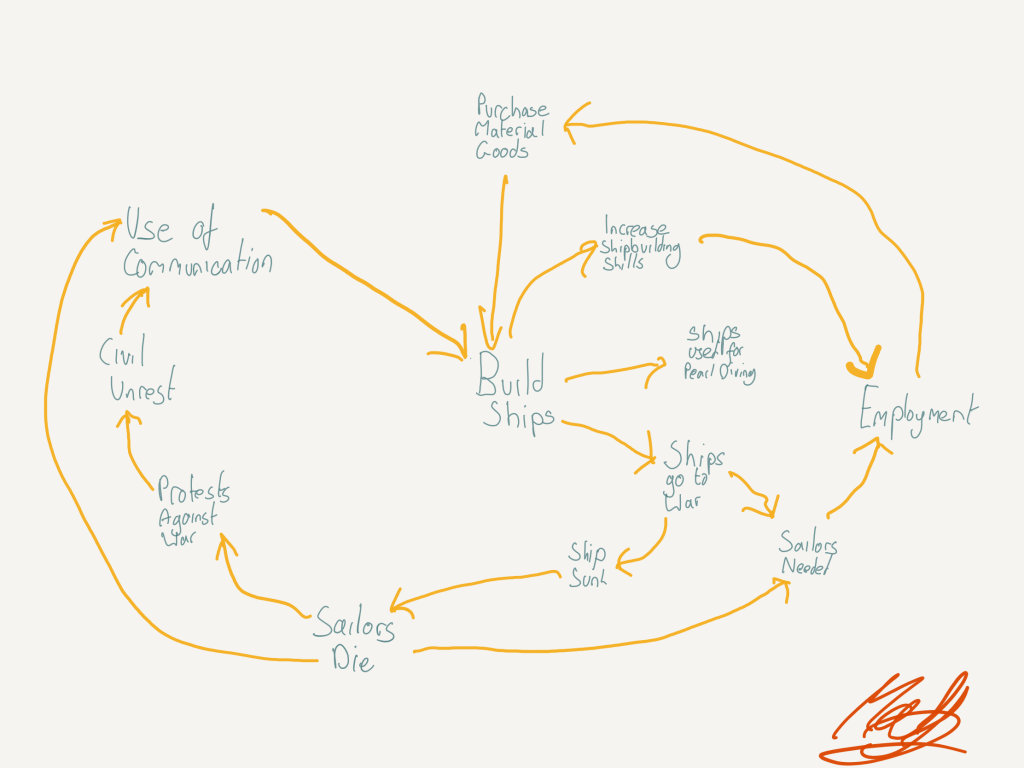Robert Wyatt, Shipbuilding and Systems Thinking
Using the song Shipbuilding (https://youtu.be/Res3-YX4X8g) to explain some basic #systemsthinking concepts and using a simple causal loop diagram.

So, the central premise of the song is that the shipyards will reopen to build ships to replace the ships destroyed during a war. This then leads to ships going to war, with ships being sunk and sailors dying. This then creates a need for a) more ships and b) more sailors.
Creating a need for more sailors leads to more employment, however the song also points out that ships could be used to go pearl diving, which would also increase employment. Increased employment then leads to the purchase of material goods with (indirectly) funds shipbuilding.
Additionally, shipbuilding also leads to protests against the war which leads to civil unrest. Both sailors dying and civil unrest results in an increase of communication which supports more ship building.
So, looking at some basic concepts we can see the use of boundary setting by the song. The song firmly sets the boundaries and doesn’t expand into areas such as tax, political power, the media etc.
It also establishes the idea of relationships such as shipbuilding has a direct relationship with the purchase of material goods and that between communication and notifying people about family dying.
It also shows how everything within the boundary is connected (either directly or indirectly). It also shows multiple perspectives as from one perspective ship building is positive as it leads to bikes and coats.
Whilst from another perspective it shows that shipbuilding leads to death and civil unrest. It also shows that the performance of one part of the system can affect other parts, if ships stop being built then employment drops. It also shows potential other options.
One other option would be to build ships to dive for pearls however this would need to be explored using a subsystem as it’s possible that without ships sinking there would only be a finite number of ships needed.
It also highlights that parts of a system are not always obvious. For instance, whilst the purchase of coats and bikes is welcomed the death of a family member would not be.